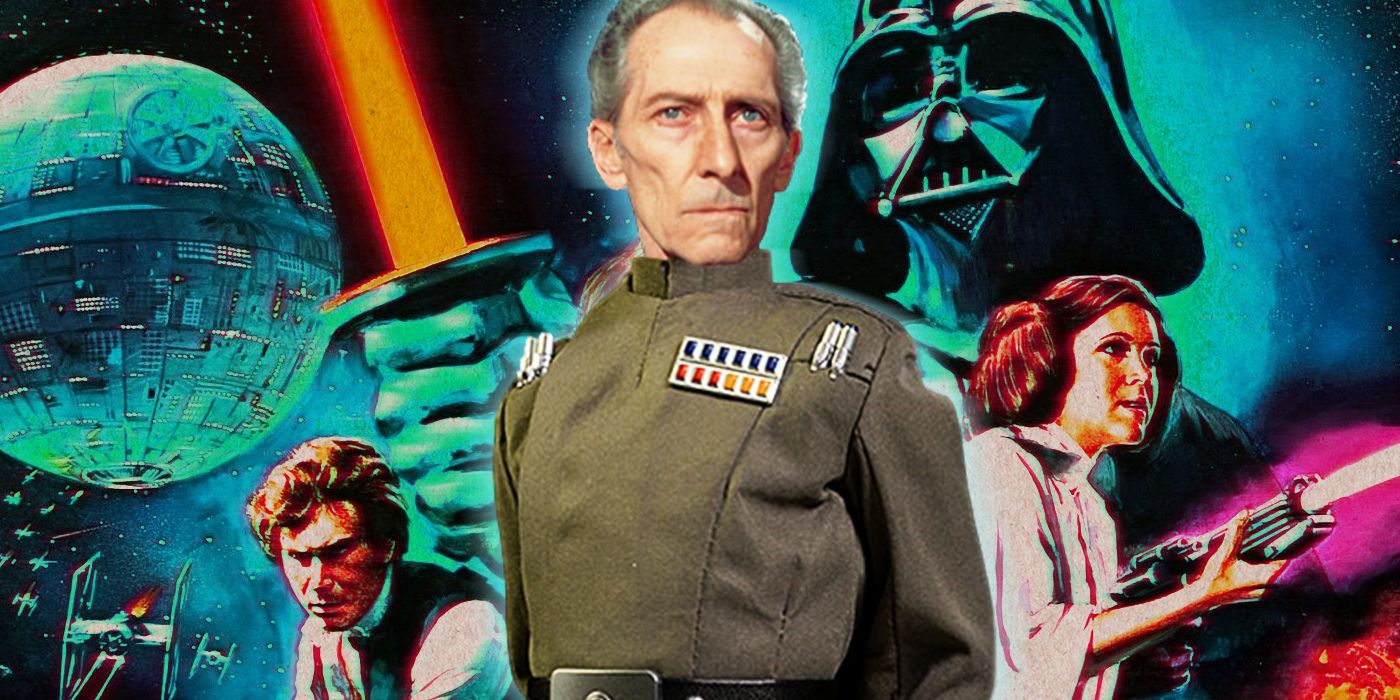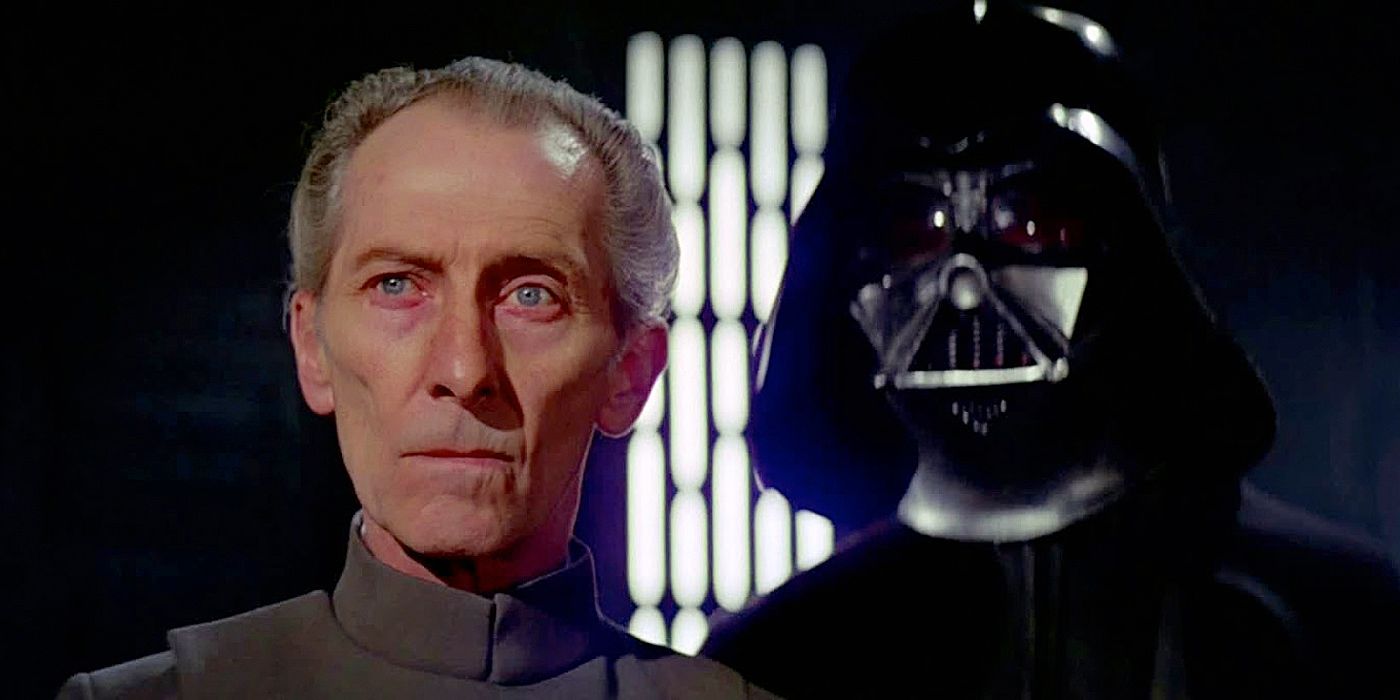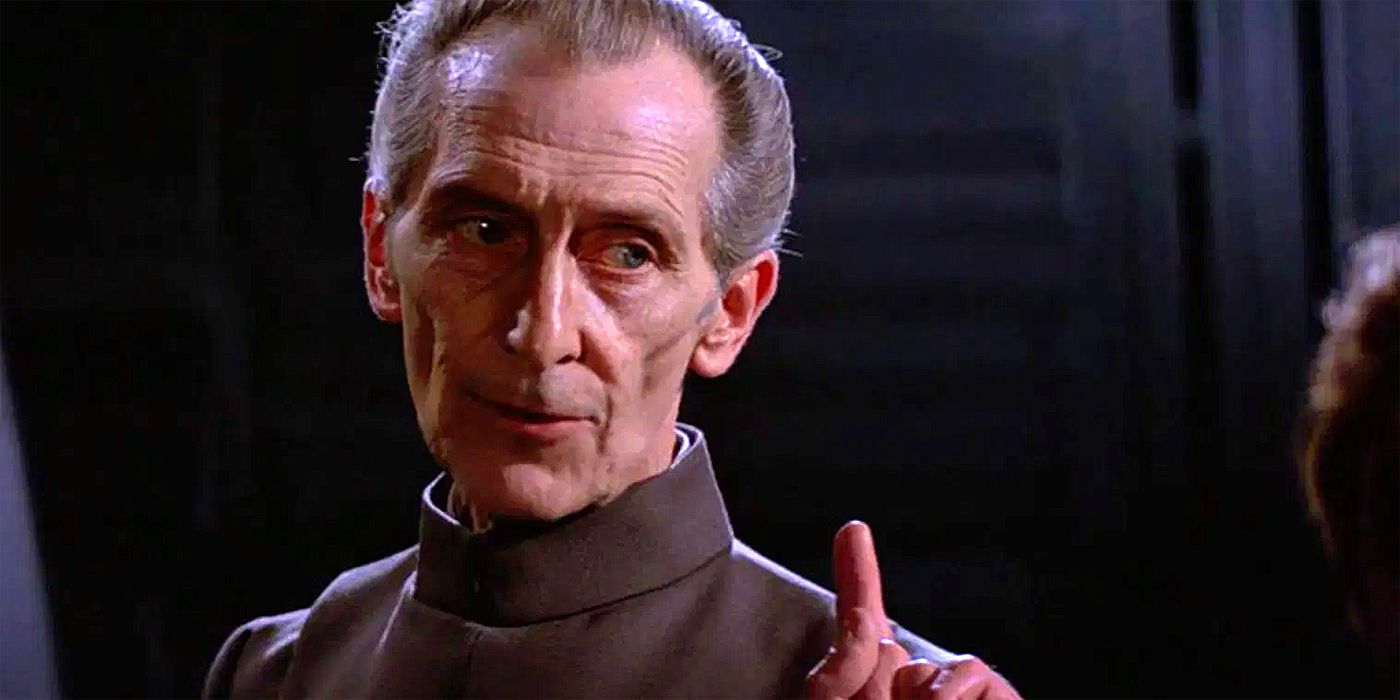Star Wars includes some of the greatest villains in pop culture history, and few figures hold more menace and malevolent power than the saga’s array of Sith Lords. But the saga's most dangerous bad guy didn’t carry a lightsaber or Force choke his enemies. Grand Moff Tarkin, the Imperial officer overseeing the Death Star, held far greater capacity for tyranny and bloodshed than any Sith warrior. Indeed, part of the danger lay in the fact that he appeared far less dangerous than they did.
Star Wars: Episode IV – A New Hope presented Tarkin as the principal villain, with Vader as his henchman. Princess Leia even comments on it during their confrontation on the bridge of the Death Star. While subsequent Sith Lords were patterned on Vader’s fanaticism, more rank-and-file Imperials were often molded on Tarkin, and none of them – Sith Lord or fleet officer – gained more than a fraction of the results he did.
Tarkin's Political Maneuvering Was Sublime
Tarkin was a political animal, which meant something far different than the direct personal power of a Sith Lord. The Sith were driven by personal vendettas, hatred and the indulgence of personal passion. Men like Tarkin, on the other hand, lacked the passion to feel much of anything, including concern about their fellow sentient creatures. That led him to blow with the political wind when he wished, always appearing as an ally to those who had the upper hand. This became readily apparent during his first appearance in Star Wars: The Clone Wars, when he acted as an active ally to the very Jedi he later helped to wipe out.
And because he could play the political game so well, he approached every onscreen interaction from a position of strength. His interrogation of Princess Leia in A New Hope is the most overt example, but a similar dynamic appeared in Rogue One: A Star Wars Story, when he leveraged the Death Star away from Orson Krennic. He even famously had Darth Vader under his thumb, suggesting that the repercussions of crossing him could give pause to even the most powerful Sith Lord. That in turn allowed him to eliminate his enemies when and where he chose, and because he didn't have Force powers, he wasn't a natural target for other Sith Lords.
Tarkin Knew How to Exploit Power
Personal grievances may be the downfall of the Sith as a general rule, as the emotions they use to channel their power ultimately prove their undoing. Darth Maul, for instance, wasted much of his temporal power searching for Obi-Wan Kenobi. Tarkin, however, lacked such personal blind spots and didn't allow himself to be troubled by perceived affronts, which allowed him to exercise power for its own sake on a cataclysmic scale.
That began with acts like the destruction of Alderaan, which he ordered with a casualness that any Sith Lord might envy. But beyond that, he understood that it only takes a few such acts to silence any opposition. Had the Death Star not been destroyed, he could have brought the Rebellion to its knees without learning where the Rebel Base was, solely because he knew how the Death Star was going to be perceived by a terrified galaxy. Furthermore, he actively used his position to retain and protect the Imperial chain of command from the likes of Vader (whose Force choking remained more threat than promise until Tarkin’s death), which meant protecting greater Imperial interests rather than comparatively small grudges.
Ironically, his gruesome pragmatism failed him at the end of the Battle of Yavin, when he gave in to personal vanity rather than making the safe move and evacuating the Death Star. The Rebels were fortunate to take advantage of such a lapse, because it didn’t happen often. Vader may have bedeviled the Rebel forces, but between him and Tarkin, the Rebellion probably eliminated the bigger threat first.



